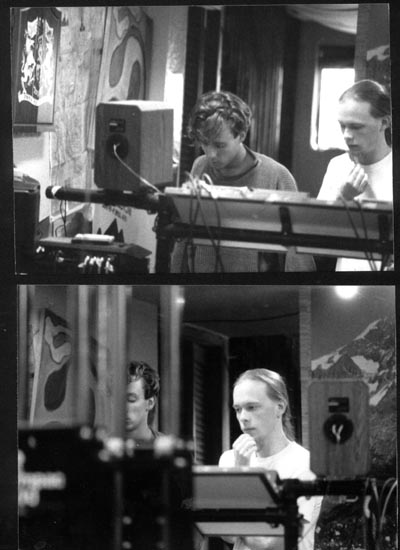On we go with more history about ne quid nimis. The next track in my remembrance of this project is “waiting”.
–
This track was in some senses a kind of tour de force of my previous work with “destroyed and abused” compact discs. I had been heavily delving into the use of the compact disc as an instrument of sorts for several years. I guess this places me as a contemporary of artists such as Oval, who pioneered the use of digital “glitches”. I do clearly remember the day when I encountered Oval’s album, found out about the praise it was garnering for its futuristic techniques and instantly my heart sunk and I said to myself “Oh shit, I guess this makes me a copycat now.” After that moment I never used another skipping CD as a sound source. I actually couldn’t even bring myself to listen to Oval’s music for a few years, so I guess I felt pretty low about the whole thing, which seems really very silly now, especially since I now know that Oval’s music is about 400 times better than anything that I ever did with skipping CDs.
–
I remember my best method for getting CDs for experimentation was to go to Wax Trax! and Albums on the Hill in Boulder and ask the people working there if they would give me some of the CDs sent to them as promotional items from record companies. They’d point me to boxes of hundreds of copies of albums and CD singles by bands like Firehose and Roseanne Cash and the Sensible Things. All those copies were probably eventually tossed in the dumpster.
–
After quite a bit of experimentation with ways to get CDs to skip (sandpaper, X-Acto blade cuts, burning with a lighter) I finally settled on the best method: a water/sugar solution left to dry on the CD surface. If the syrup dried and didn’t give a good skip, I could always wash it off and try again.
–
I did an awful lot of experimentation with this technique, and finally arrived on a method to render these sounds into a rather calming, throbbing sound field which I was really proud of at the time. Somehow, out of the context of the time, I’m personally left a little cold by the whole thing, which is a little sad.
–
One of the nicer compliments anyone has given me was about this song, from John Gore of Kirchenkampf, who said back when this album was originally released on cassette by AudioFile Tapes, that it was the sound of the future. As ironic as that feels now, I still warm at the compliment.
–
Within just this last week, I was looking through old cassette tapes and found a compilation on Epitapes called “Death Full of Flowers” – probably from the 1994-1995 time period – and on it was a track credited to C. Reider (odd enough by itself, during this time period, I usually credited my music as Luster). The title of the piece on the tape was “Study in Compact Disk Abuse”. I had completely forgotten about this track. In fact, its appearance on this compilation was the only copy I have of the track. I didn’t even bother to archive a mix of it for my own records, so it’s very rare, indeed. When I listened to it earlier this week, I was surprised to hear an early version of “waiting”. The structure of the piece is all there, so I guess this is a demo version of the song. In case you are interested, here’s the track. I haven’t cleaned it up at all, so beware of tape hiss.
–
C. Reider – Study in Compact Disk Abuse
Posted by
C. Reider
